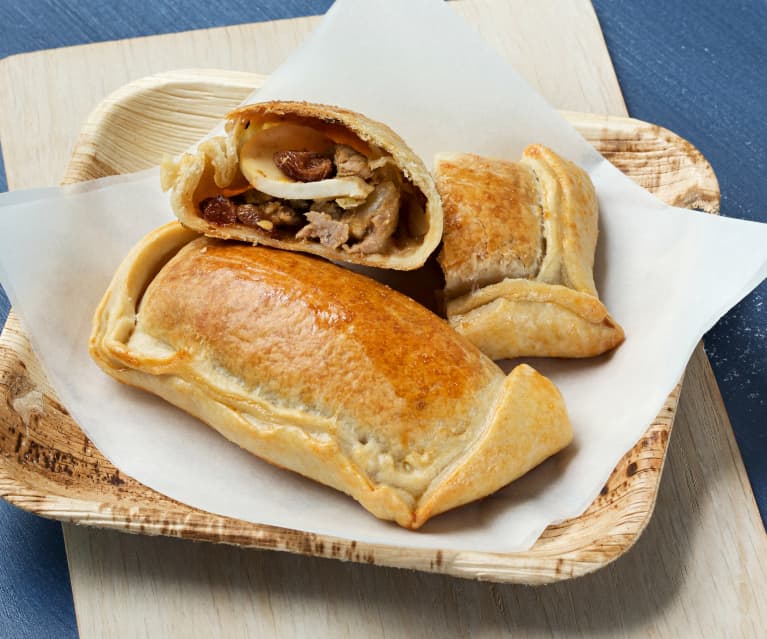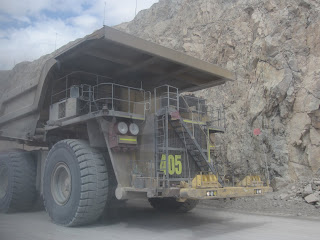Personal LDS mission experiences shared by Nathaniel Hart
My Journey towards finding faith in the Atacama Desert.
The first thing I noticed as we landed, oddly enough, was the trucks. Amidst the dune sea we had landed in, there was a parking lot composed entirely of red pickups. An army of them. What were they doing here? I honestly had no idea.
The plane we took from the Chile, Santiago airport to Antofagasta (the largest city of the top third of the country) wasn’t large, but it wasn’t small either. While immature American young men and women outfitted with name plaques didn’t constitute the entirety of the passengers, they certainly were a majority.
I found find out later that nearly everyone else on that flight was associated with the largest employer in Chile—CODELCO. The largest copper producing entity in the world, many of its employees would live with their families in more hospitable regions of the country and then fly up to the barren wastelands of the Atacama to work.
These were the people we were called to teach.
People who didn’t even live there permanently, and were just waiting for their 7-day shift to end so that they could go back to their families.
The Land of Red Trucks
Escorted by the mission president and his wife, we took a bus from the airport to Antofagasta. It was a long ride—about an hour—and we had plenty of time to talk. My first question was, of course, about the red trucks.
What a stupid question. That was how I introduced myself to the mission president and his wife.
Really.
But they were patient. And I wasn’t the only missionary to make a fool of myself; others did too. We stopped at La Portada, a giant natural stone arch about a hundred yards from the shore, to take pictures. It’s an iconic landmark (not that many people see it, unless they’re driving to or from the airport), and those were the pictures we would be remembered by. Windswept hair, squinting eyes, unworn suits—missionaries fresh from the factory.
Little did we realize how different our experiences would be, how much we would each individually grow and change and suffer. How our testimonies, our teaching styles, even our way of speaking would be slowly but unmistakably molded in a unique way, just like the formation of rock we were standing in front of.
But how could we know these things? Nearly all of us were straight out of high school, still getting used to doing our own laundry. And now we were hungry, asking when we’d be having lunch. The answer was “soon”. Another twenty minutes on the bus and we would be at the gated entry to the mission office, ready to try empanadas—and meet our first mission companions.
Chilean Jawbreakers
If you ever get the chance to visit Chile, you have to try an empanada de pino. They’re a tradition; from Arica to Puerto Williams, there’s no avoiding them. Pretty much every South American country has their own version of an empanada (if you visit an empanada stand, you’ll see that there are about 50 variations), but these concoctions consisting of ground beef, hard boiled eggs, and a hidden black olive surprise are distinctly Chilean.
That was my first time trying one; in the mission office. And it was an experience I will never forget. They look almost like little calzones, buttered bread folded in half around their contents and baked (or fried) until they are golden brown. The first bite I had was good. The second was even better. I was well into munching on my third, thinking to myself that Chilean cuisine wasn’t all that bad, when I bit down on something hard and bitter.
I’d just encountered my first aceituna.
You see in Chile, for whatever reason, they leave the black olives— aceitunas—pitted. Of course I didn’t know that, and had consequently felt as if my left molars had split. I looked around at the other brand new missionaries. They were going through similar experiences.
I didn’t know it at the time, but it turns out that this prank was something of a tradition in the Antofagasta Mission. The soon-to-be trainers get to sit down to lunch with the newly-minted missionaries and watch them crack their unsuspecting teeth on black olives with pits. Later on in my mission experience, I would get to trade smug looks with other veteran missionaries, but not today.
Today, I was clutching at my jaw.
First Assignment
We sat in a big circle, with the new missionaries on one side and the trainers on the other. The mission president, President Dalton, gave a talk about something (none of us newbies had any idea what he was saying; it was in Spanish). We all sat and listened.
Eventually, we got the part we all really cared about. A box was brought out of President Dalton’s office. Inside were envelopes. We went around the circle, finding our letter and reading it aloud. There wasn’t much written on them—just the city or town we would be working in, and the area and companion we would be assigned to.
As each missionary read their assignment, their trainer would jump to their feet, running over and giving them a big welcoming hug.
Pretty soon, it was my turn.
Antofagasta, Miramar, Elder Swett.
I looked up, and I was nearly tackled by a short, stubby missionary in a…
Cowboy hat?
“Yeeeeeeehaaaaaw!!”
That’s how my trainer and I met.
Las Minorías de Chile
The Chile, Antofagasta Mission makes up roughly the most northern quarter of the country, covering the majority of the Atacama Desert. There are some pockets of water and life, but for the most part this area of the world is barren. There are some areas of the desert which haven’t received rain in 400 years (and counting). It’s a difficult place to live, even in the 21st century.
Yet, even with the hardships which the people of northern Chile endure on a daily basis, it is a region with plenty of economic opportunities (for those who are willing to trade their comfort and health, that is). Copper is plentiful here, so much so that you can’t drive more than half an hour along the coastline without seeing the turnoff for a mine. They are littered throughout the Atacama. And you come here to work in them, or support those who do.
I remember hearing once in my high school class about how jeans were invented. I didn’t remember the story perfectly, but there was something about a guy landing in San Francisco and realizing that there were already too many people looking for gold. He wasn’t going to be able to make a living panning in the rivers, let alone become rich.
Instead, he saw that there was a nearly insatiable demand for the tools and equipment that the miners used. From tough, durable cloth he cut and sewed the first pair of jeans. They were an instant hit, and years later he sat atop an empire built not on gold, but on workman’s clothing.
As Elder Swett, my missionary trainer, helped me and my suitcases onto the bus, I couldn’t help but remember that long-dead inventor of jeans as I looked around. Sitting beside me were men and women who were obviously miners (they weren’t covered in soot or outfitted with helmets and headlamps, but they wore clothing with the burnt orange and black logo of CODELCO). But there were so many others who obviously employed in other trades.
Yes, mining is and was everything in Antofagasta. It is a city that will cease to exist the minute the last ounce of copper is extracted from El Tesoro, La Esperanza, or Los Pelambres. Like nowhere else I had ever visited, this city was the epitome of a capitalistic rat race. Every occupant living here had only one goal: make as much money as possible, then get out. These were the people I was supposed to teach. People with no particular ties to the area, or even perhaps the country. They were people pushing themselves to work as long as they could each day in an attempt to return to their families and homes.
You came to Antofagasta to work, nothing else.
And these were the people I was supposed to teach.
Ready to Work
While Elder Swett had greeted me with the biggest hug I could possibly imagine (indeed, I might have classified it as the beginnings of a rugby tackle, considering the lingering pain I experienced in my side afterwards), I soon came to realize Elder Swett didn’t like to talk much.
He was polite enough to ask where I was from, what my family was like, what some of my basic interests were, and so on. But after a little while, he grew disinterested in our conversation and pulled out a book.
We rode in silence until our stop came ten minutes later.
A lot of the other new missionaries had to take day-long bus rides with their trainers to the distant regions they would be proselytizing in, but luckily for us, our apartment was only an hour’s walk or so from the mission office. However, since the entire city of Antofagasta is built on a steep incline (with the richest neighborhoods closest to the sea, and the poorest areas closest to the mountains which surround the city), it was a no-brainer to grab a bus.
I was carrying two suitcases, after all.
As soon as we arrived in the apartment, Elder Swett helped me lug my suitcases into our shared room, waited for me to get changed out my suit, and then motioned for the door.
“We’re going out to work? Today?”
I had expected to have at least one day to get settled in, learn a little about the people, the city, missionary work, the other missionaries we were living with, everything.
Elder Swett nodded. If there was one thing I would come to learn about him, is that while he usually expressed no qualms about bending a few rules (he liked to categorize them more as guidelines), he was one of the hardest working people I have ever met.
Now in a short-sleeved white shirt, my shiny, brand-new missionary plaque clipped to my shirt, Elder Hart was ready to take the people of Antofagasta by storm.
Elder Swett opened the door, and a column of dust slammed into us in the doorway. I coughed, and looked up at the sun with squinted eyes.
“Is it always this bright?” I asked, wondering if I should have brought sunglasses.
Elder Swett laughed. “This? Oh, no. Wait until tomorrow, when we’re out at noon. That will be twice as bad as this.”
And so we trudged out the door, climbing towards the hills, off to teach and preach and work as missionaries do.

.jpg/1200px-Atacama-7_(26389240332).jpg)





No comments:
Post a Comment